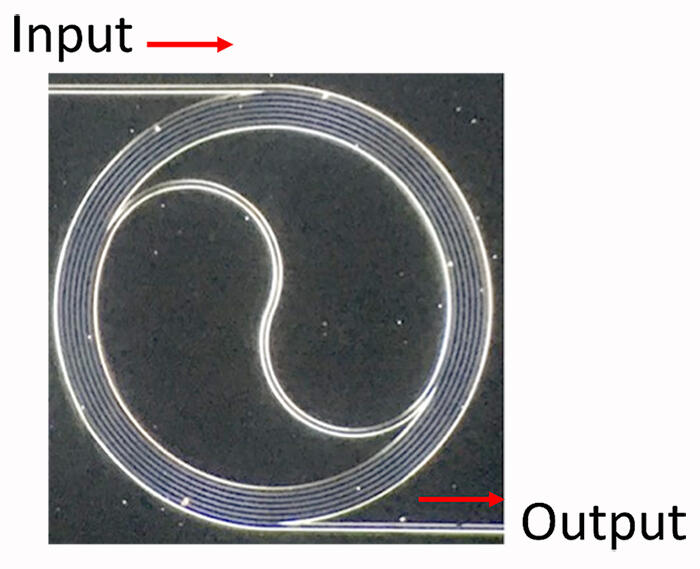A joint research group led by Prof. Satoshi Sunada of the School of Mechanical Engineering, College of Science and Engineering, Kanazawa University and Prof. Atsushi Uchida of the Graduate School of Science and Engineering, Saitama University have designed and developed an optical circuit that can implement photonic neurons in a minute region at high density and large scale by utilizing the spatial degree of freedom of light wave motion. It was observed that reservoir computing is feasible at ultra-high speed and low power consumption using the developed optical circuit. In the developed optical circuit, a "field" of the photonic neurons continuously distributed in space can be formed, which in principle enables the implementation of (virtual) optical neurons at intervals of the optical wavelength scale (several hundred nanometers). Moreover, the high-density property of the circuit has the potential to achieve speeds 60 times faster than state-of-the-art optical reservoir circuit chips and energy savings 100 times greater than electronic circuits. This result will help in achieving ultra-high-speed AI processing and energy saving. The findings were published in Optica.
Although AI is used in many situations and the scope of its application is expanding, AI processing used in current technologies requires considerable amounts of computing resources and energy; therefore, new computing technology with lower energy requirements is needed.
Light-based computing is a promising new technology. This is because there is no energy loss due to wiring resistance or capacitance unlike in technologies that use electronics as the carrier of information. Therefore, power consumption can be reduced significantly, and the calculation speed can become equal to the speed of light. Although various optical neural network circuits have been proposed, it was difficult in principle to construct a large-scale neural network circuit on a chip because most of them consist of one-dimensional optical wiring (single-mode waveguide).
The research group proposed a new optical neural network circuit that focuses on high spatial degrees of freedom due to the wave nature of light by utilizing the speckle phenomena (irregular spots shining with glare when laser light is applied on sandpaper, glass, etc.). It was noted that speckles occurring in wide and spatially broadened optical wiring (multimode waveguides) can be regarded as a neural network that is virtually and spatially continuous with infinite degrees of freedom. By creating such a "field" of optical neurons and using their high expression ability, it is expected that the neural net processing will become possible.

Provided by Kanagawa University
In this study, a new optical circuit that integrates the necessary elements for generating optical neuron fields on a silicon chip was fabricated. In the fabricated optical circuit, a network corresponding to randomly coupled optical neurons can be packaged at high density and on a large scale in a minute chip using a coupled multimode spiral waveguide structure. Moreover, by using it as a reservoir of information, reservoir computing can be performed with high speed, low latency, and low power consumption.
Reservoir computing is a new neural network that has been shown to have similarity with the cerebellum. In a neural network that imitates the cerebrum, advanced processing is possible; however, calculations may take time and the learning is difficult. By contrast, in reservoir computation, learning is simple and does not require a large amount of data. Similar to a recursive neural network, it also excels in processing fluctuating time-series data, such as speech and stock prices. In fact, a one-step prediction of the chaotic time series at a rate of 12.5 gigasamples per second (corresponding to the fact that the light spontaneously performs the product-sum operation processing at more than 1 peta per second) revealed that it has a computational processing capacity of more than 60 times the state-of-the-art optical circuit. Further increase in speed is also possible using the optical wavelength division multiplexing system used in the optical communication field. In addition, since only the incident optical power is required for this neural net operation, there is no need to adjust the optical network and no wiring is required. The energy consumption per product-sum operation is estimated to be 0.15 femtojoules, which is much smaller than that of existing circuits.

Provided by Kanagawa University
Although it is still in the stage of principle demonstration, it is expected that by further upgrading the optical circuit chip in future, it can be developed into a technology that can instantly recognize and estimate even practical and advanced tasks using optical reservoir computing that corresponds to more than 1 million photonic neurons on an optical chip.
This article has been translated by JST with permission from The Science News Ltd.(https://sci-news.co.jp/). Unauthorized reproduction of the article and photographs is prohibited.




